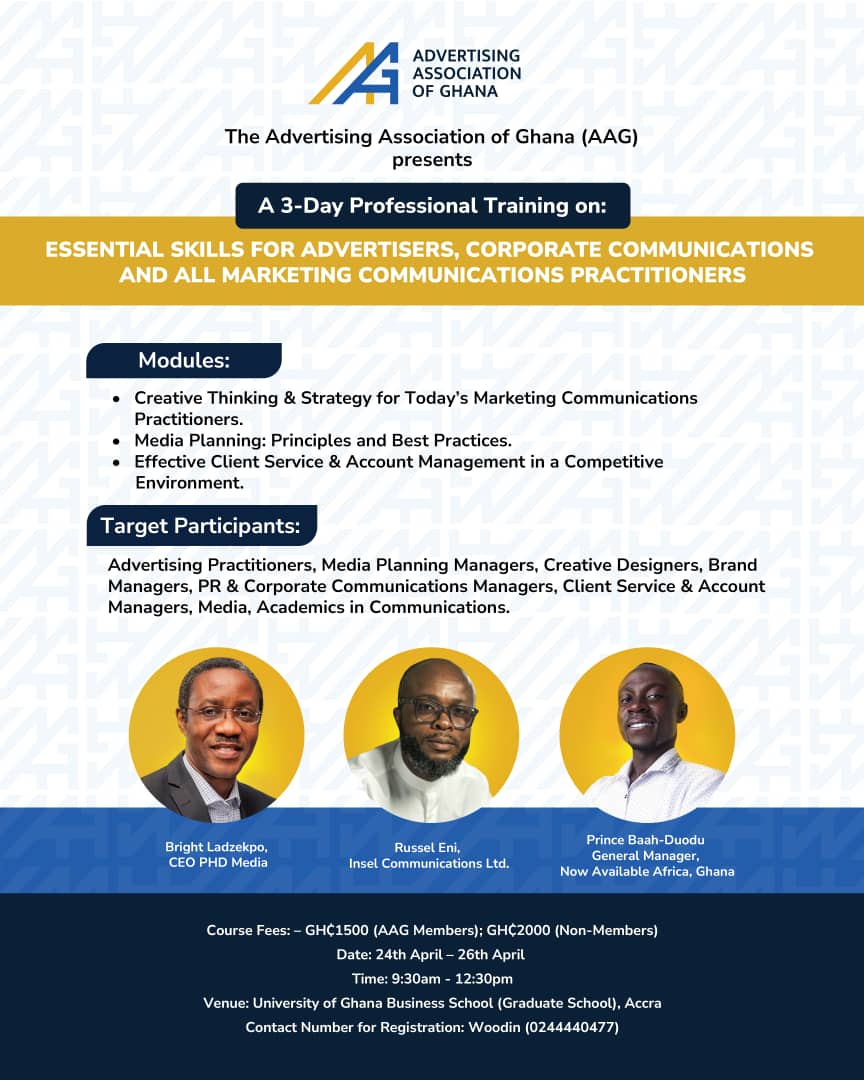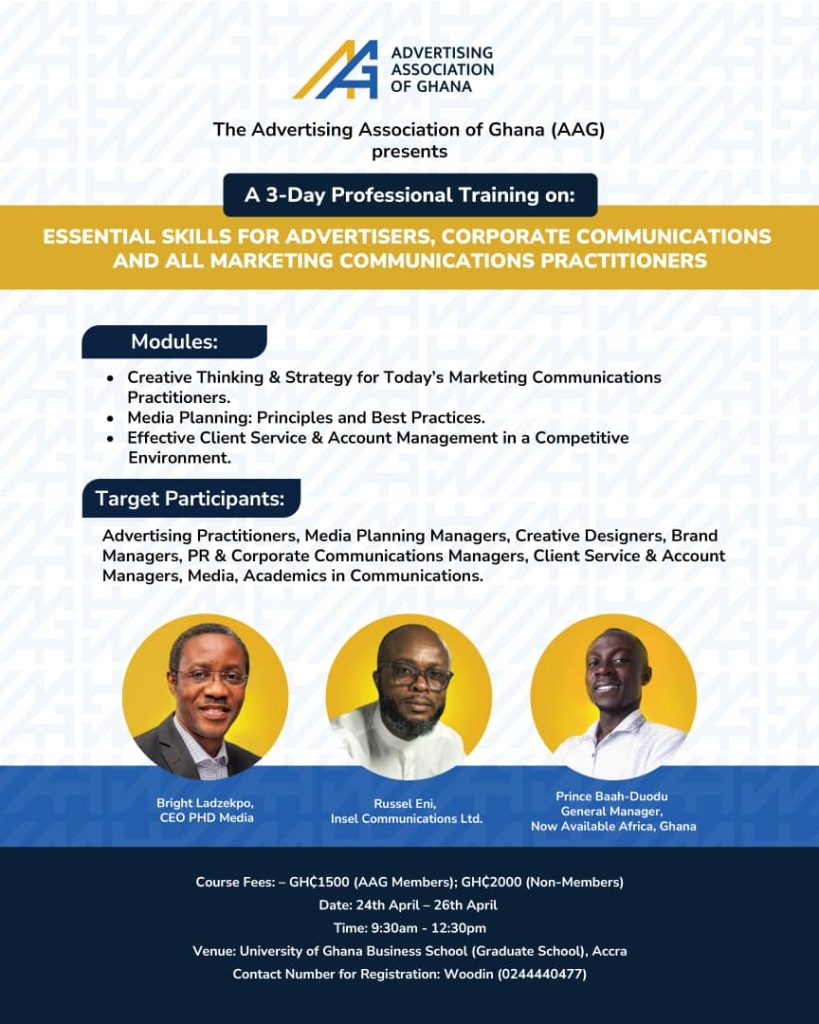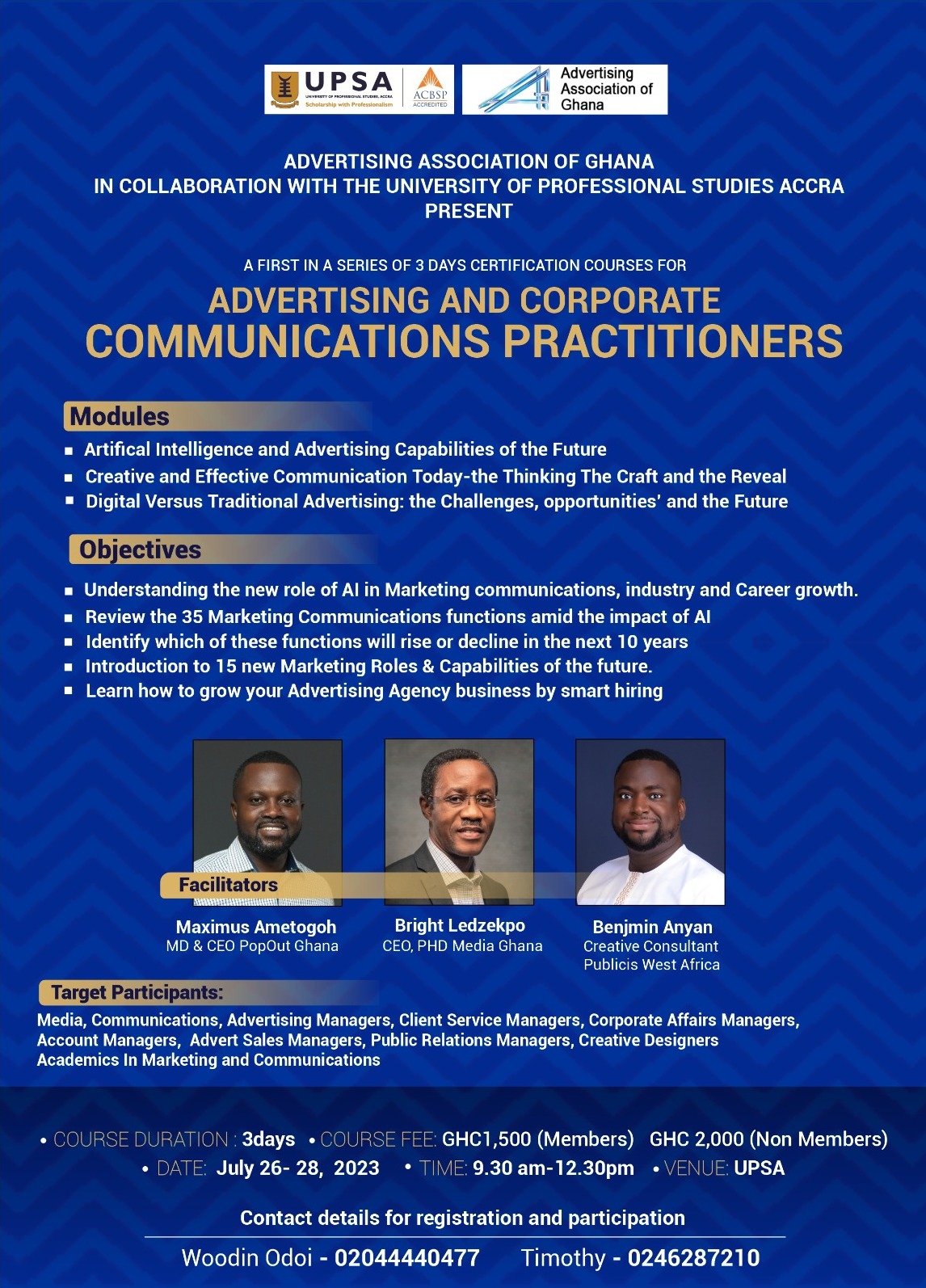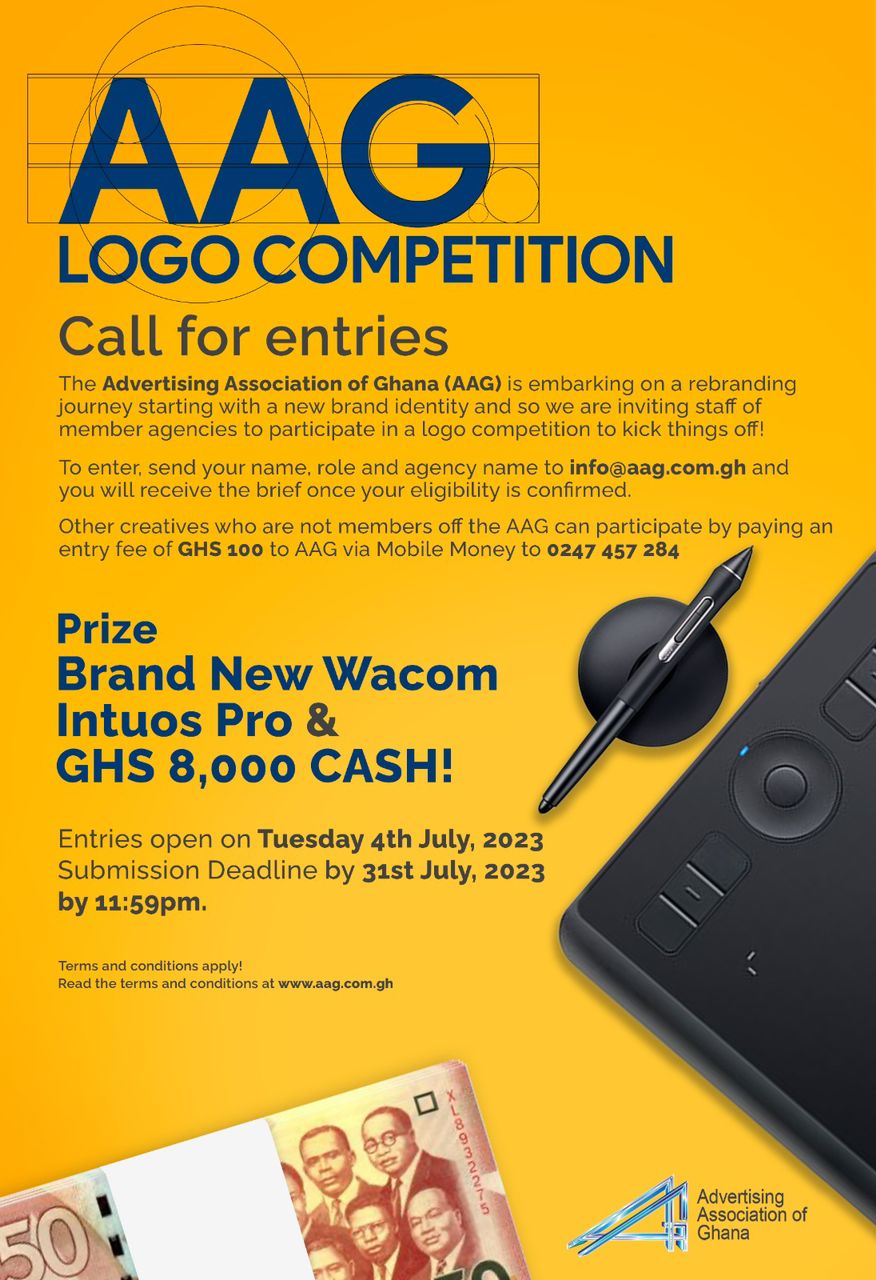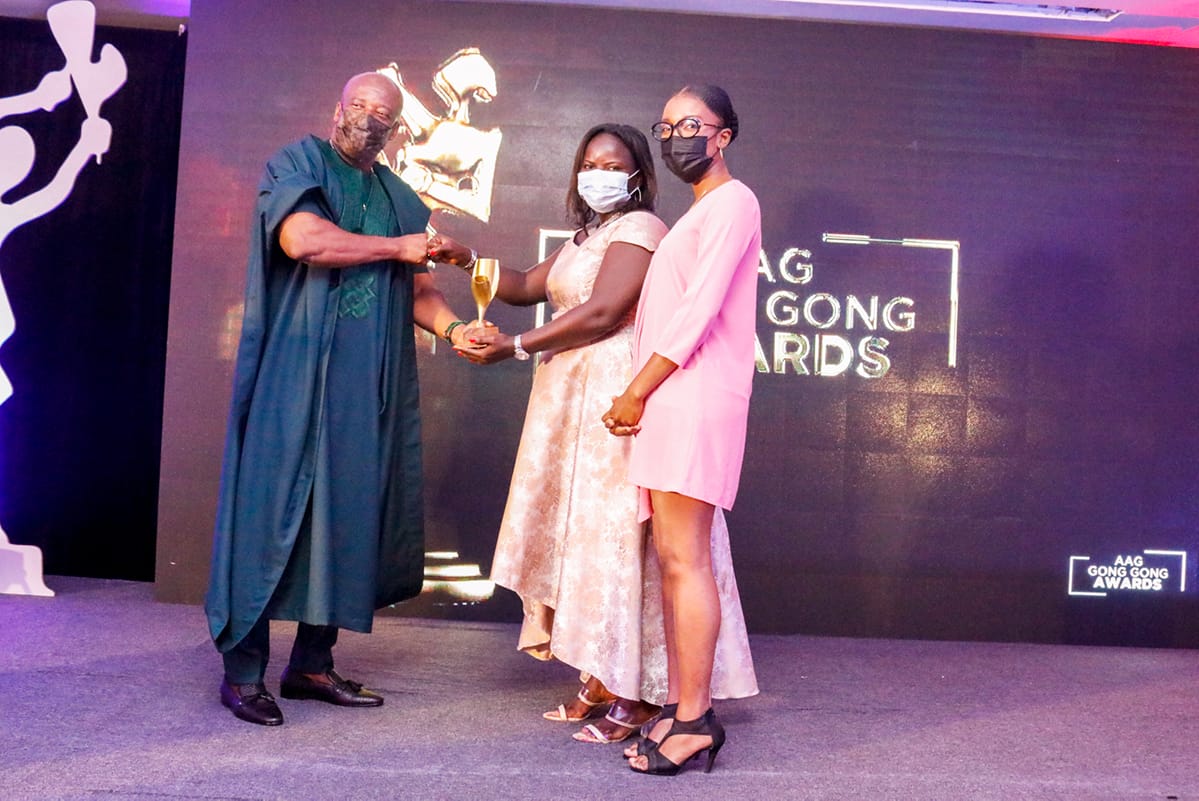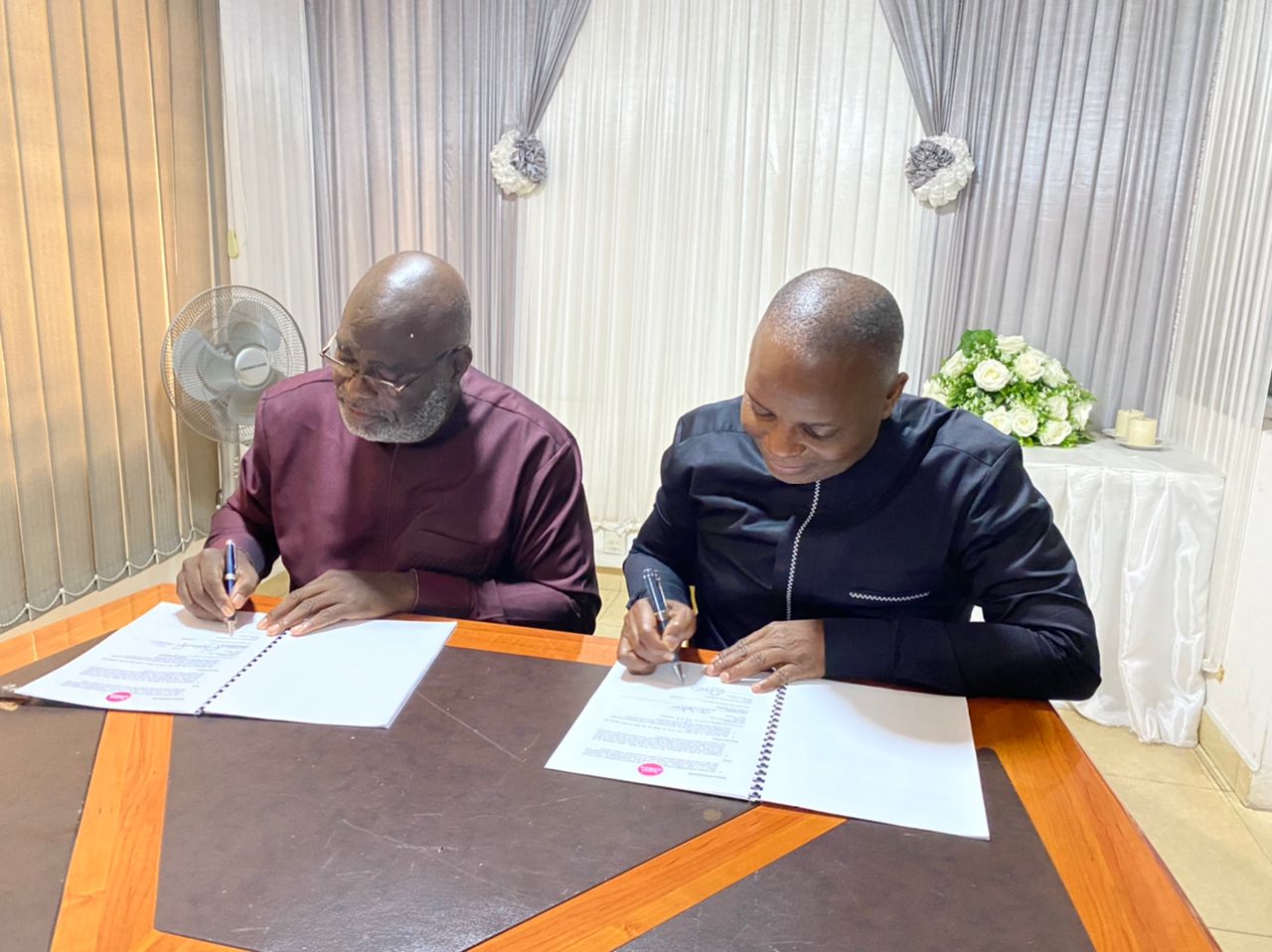3 Days OF ESSENTIAL PROFESSIONAL SKILLS TRAINING for: Advertisers, Corporate Communications
Managers, Brand Managers & all Marketing Communications Practitioners.
Demystifying the Concept of Brand Positioning
Brand positioning is a cornerstone of marketing strategy and a critical element in the success of any brand. However, while it is widely used, the
concept is often misunderstood. The confusion partly stems from mistaking the general term ‘position’ for the marketing concept of ‘positioning’. This article aims to clarify this marketing concept by explaining its elements, illustrating how they interlink, showcasing examples, and highlighting
contemporary perspectives.
As stated above, one of the root causes of the confusion around brand positioning is the tendency to equate technical marketing terms with their
everyday meanings. This isn’t a dilemma exclusive to positioning. Technical terms, when resembling common words, are often misunderstood – much like the inability of most business leaders to differentiate between what a vision is and what a mission is or confusing the statistical term ‘Regression’ with the general notion of reverting back to a previous state.
So what indeed is the marketing concept “Positioning”? When people hear ‘positioning’, they vaguely associate it with how a brand is placed in the
consumer’s mind. While not entirely incorrect, this notion lacks depth and direction for effective brand building.
To dispel the fog around brand positioning, let’s dissect it into its three primary components, as represented in the diagram below.

- Frame of Reference (FOR)
The FOR is the foundation upon which brand positioning is built. It establishes the context in which the consumer can appreciate the goals of using the brand. It contextualizes the brand by answering, “What fundamental need does this brand fulfil?” or “What category does it belong to?”. While foundational to a brand’s position, this is the element most people leave out when considering positioning their brand. - Point of Difference (POD)
Once the Frame of Reference is established, the next step is to define how the brand excels in fulfilling the consumer’s goals. The POD can be functional, like innovative features or higher quality, or emotional, such as status or a sense of belonging. Unfortunately, many brand owners jump directly to this step without establishing a solid Frame of Reference. - Reason to Believe (RTB)
The final ingredient offers a persuasive reason for consumers to believe the brand’s claims. This can be factual evidence, awards, testimonials, or any proof that reinforces the brand’s credibility.
Traditionally, these elements are woven into a positioning statement that is structured as follows: “For <TARGET CONSUMER>, brand X is <FOR> that <POD> because <RTB>.”
Here are three examples of the positioning statement:
- VOLVO – For FAMILIES, Volvo is the FAMILY CAR that OFFERS THE PERFECT BALANCE BETWEEN SAFETY AND DURABILITY because of VOLVO’S HISTORY OF INTELLIGENT DESIGN.
- DANGOTE CEMENT – For CONSTRUCTION COMPANIES SEEKING RELIABLE QUALITY, Dangote Cement is the TRUSTED CEMENT BRAND that GUARANTEES STRENGTH AND DURABILITY because IT’S CRAFTED WITH TOP-GRADE MATERIALS AND A COMMITMENT TO EXCELLENCE
- DHL – For BUSINESS MANAGERS AND PROFESSIONALS ENGAGED IN MAKING TIME SENSITIVE DECISIONS ABOUT INTERNATIONAL BUSINESS, DHL is THE MOST PUNCTUAL SERVICE among PROFESSIONAL COURIER COMPANIES because ITS PICKUP, TRANSPORTATION, AND DELIVERY SYSTEM IS WHOLLY OWNED AND MANAGED BY DHL PERSONNEL
This formula aids in ensuring clarity in a brand’s positioning, which, according to Rosenfeld, Sirowitz & Lawson (1971), is “the most important step in effective selling.” In this classical view, it is imperative for consumers to first understand what a product is and the function it serves (FOR) before they can gauge how it is better than other brands (POD).
Traditionally, brand positioning was viewed as a static declaration. However, the contemporary perspective considers it more dynamically, as the mental availability across various Category Entry Points (CEPs)¹. In the contemporary view, positioning is an ongoing dialogue with the consumer, requiring adaptability and a keen sense of market trends. A brand with strong positioning in this sense is mentally available across an extensive range of CEPs.
An example illustrating the importance of understanding the elements of positioning and systematically building them is GCB Bank’s G-Money product. In the mobile money category, there is MTN Momo, whose FOR is Mobile money for MTN customers, Vodafone Cash Mobile money for Vodafone customers and Airteltigo Money for Airteltigo customers. These brands were clear about their FOR, focusing on the primary goal of providing mobile financial services to customers of their respective mobile networks. And that is how the marketing understood mobile money.
In contrast, G-Money aimed to be an inclusive mobile money service, catering to everyone regardless of their mobile network. However, the initial communication did not clearly establish this Frame of Reference. Instead, the marketing message jumped straight to a vague point of difference with the tagline “Papa n’aba, twa tum”.This meant that many consumers mistakenly believed G-Money was exclusively for GCB Bank customers, similar to how MTN Momo was for MTN customers and Vodafone Cash for Vodafone users.
This lack of clarity in establishing a distinct Frame of Reference meant that many consumers didn’t even realize that G-Money was meant for them. The brand missed an opportunity to connect with a broader audience right from the start. G-Money could have started by building a strong Frame of Reference. For example, the initial communication could have been centred around “Mobile Money for Everyone”, clearly signifying that G-Money is not limited to GCB Bank customers. Once this foundation was established, subsequent communication could focus on the unique features and benefits that set G-Money apart from competitors.
This example underscores the point that positioning is a strategic process, requiring a well-thought-out approach of first setting a clear Frame of Reference before highlighting points of difference. Without an adequately established FOR, the audience may not fully grasp a brand’s basic purpose, which can hinder brand growth and adoption.
Positioning is essential in brand building. Understanding and implementing it requires more than a cursory glance at its dictionary definition. By establishing a clear Frame of Reference, articulating a distinct Point of Difference, and providing a compelling Reason to Believe, brand owners can lay the groundwork for a potent brand position. By blending classical methods with contemporary insights, brand owners can navigate the ever- evolving marketplace with clarity and purpose.
Abdul-Nasser Alidu
CEO, The Little Cow Consulting Limited
a.alidu@thelittlecow.net
¹A Category Entry Point refers to the various situations, occasions, or needs that prompt consumers to think about a product category and consider making a purchase. In other words, it’s the specific set of circumstances that trigger a consumer’s mind to enter a product category. For example, a hot summer day is a category entry point for cold drinks in the beverage industry, as consumers are likely to purchase a refreshing beverage to cool down.
The Downsides of Influencer Marketing
Influencer marketing is a relatively new trend in digital marketing and advertising; but not a new marketing communication strategy when it comes to outdoor marketing and advertising in Ghana. Influencer marketing is one of the effective marketing communication tools by which companies and even political parties use celebrities and respected public figures to advertise and promote their brands or political parties. In Ghana, the use of influencer marketing via outdoor publicity as old as three decades or even more. But with the advent of digital technology and social media, this trend of adverting has become huge across the world, and it is speedily growing in Ghana too.
Statistics show that the amount of funds pumped into influencer marketing has more than doubled since 2019, and stood at an estimated amount of 21.1 billion US dollars in 2023. According to statistics on influencer marketing conducted by HubSpot, 25% of marketers and advertisers work with influencers to promote their goods, services and brands. The study found that 69% of consumers stated that they trust a brand or product when an influencer recommends it. This trend is making influencer marketing morph into one of the most effective and powerful marketing communication channels to watch, going into the near future.
Influencer advertising has surely become an effective channel to give product brands and services a strong exposure to both existing and potential consumers or customers. Partnering with the different levels of influencers – be it nano influencers (those with 1k to 10k followers), micro influencers (with 10k to 100k followers), macro influencers (with 100k to 1 million followers) or mega influencers (with 1 million+ followers), has been proved, by statistics, to be increasingly efficient, especially on digital platforms. The following are some of the reasons why influencers have become effective marketing channels themselves:
- They Create Good Content and Visual Appeals
Influencers come from diverse backgrounds: movies, music, socialites, media personalities, politicians, etc. Since they have come to understand the power of the number of followers they have, they engage professional photographers, cinematographers and publicists to enrich the images and comments they post online. The powerful images and controversial issues they post on make them attract their followers. Advertisers and marketing Communication experts hire them to make posts about their brands, products or services or produce attractive images in relation to the brand they are hired to promote.
- They Give Advertisers Access to their Followers
Hiring an influencer is equal to gaining unrestricted access to their followers, audience and viewers. This also means that the attributes of the product, service or brand being promoted must align with the kind of influencer the advertiser engages. The endorsements, posts, and messaging are directly targeted at the influencer’s followers online. But that influence even transcends their online followers to the general public if the advertiser uses other channels such as outdoor, radio, TV or print media.
These benefits of influencer marketing, not withstanding, there are potentially damning consequences that advertising practitioners should be aware of.
- Effects of Damning Scandals Involving the Influencer
Influencers are real-life or digital media socialites who have private lives and human weaknesses. They surely will give your brand access to the target audience or eye balls you desire for your brand; but their personal lives, values and beliefs cannot easily be controlled by the organizations that hire them or their services. If your target audience love the influencer; but are not aware of their personal weaknesses, the danger is that when a scandal breaks out about them those same people they influence could turn against them and anything they are associated with, including the brands, product or services they have endorsed. There are times when the personal and private values of the influencer can spark up problems for the brand they represent. A recent example is the case of Bud light, a top beer brand in the United States. The sales of the product and its mother company plummeted badly when American conservatives boycotted the product beginning from April 2023. The boycott was in response to an advertising campaign in which the company used an actress and TikTok personality, Dylan Mulvaney, who is also a publicly-known transgender activist.
- Influencer Posts that Conflict with the Brand and Product Values
Every brand or product has some intended values that are attached to it. Those values are the bright sides of the product that attract customers within the intended category. If the influencer makes a post or says things that conflict with the values of the brand and those it appeals to, there will certainly be a problem. For instance, if an influencer of a product that attracts the Gen Zs posts or says things that attack the values and belief system of the Gen Zs, then you are sure to see a massive boycott from that target group.
- Managing The Ego of an Influencer
Most influencers have big egos, just like most super stars. They are aware of their influence and the impact they wield on their followers and the general public. That kind of ego is difficult to manage. Such influencers will not want to be dictated to by brand owners, advertising practitioners or marketing managers. They may have signed a contract with the advertising organization, but they frown on their personal lives being micro-managed, especially when they know the kind of value they bring to the brand that hires them.
Concluding Thoughts
I will recommend influencer marketing any day, especially in today’s digital and social media environment that has become a busy marketplace that touches every aspect of life. Even for traditional media like TV, radio, print and outdoor, influencer advertising is a huge thing. Perhaps advertising agencies and the organizations that own the brands or products will have to weigh the commercial value and impact of using a particular influencer they choose so they can opt for providing special publicists, personal brand managers or PR experts to manage them. This is so because there is a critical mass of consumers and clients that are swayed positively, more personally, and more effectively through influencer marketing communication than any other means.
Isaac Cudjoe
Executive Director, AAG
Originally published on GhanaWeb.com
Introducing the New AAG Brand Identity
The AAG Council in February 2024, as part of efforts to establish the renewed sense of strategic direction for the association, took a decision to adopt a new visual identity for the association – one that was not only to symbolise a new era, but also to demonstrate the determination with which the AAG was being revived. The Council established a Rebranding Committee which was mandated to execute this project to give the association a new visual identity.
In a quest to ensure the AAG membership community was involved and felt a sense of ownership to its identity, the Council approved a Logo Competition as a means to make the process of rebranding the association an engaging one for members and the broader creative community in Ghana.
The Logo Competition was opened for entries for one month, and closed for selection and judging process for another month during which creative and business leads of member agencies were enlisted to facilitate the processes. Entries were competitive, with a final shortlist of 3 top entries, which were refined for final selection.
The winning logo was designed by Mr. Emmanuel Mihilov Mann, a brand identity designer who has honed his design craft through personal learning and hands-on experience. He was awarded with eight thousand Ghana cedis (GHS 8,000) and a Wacom Tablet, presented to him at the Annual General Meeting (AGM) of the AAG in November 2023. The new AAG visual identity has since been in the implementation stage, as the association adopts the new visual assets to its operations.
The new identity has been described as clean, familiar and yet still refreshing, as the elements of the former logo have been reimagined in a modern geometric assemblage, and accented with a distinct gold colour, bringing a fresh essence of vibrance to the AAG’s image.
The icon of the logo, crafted from the initials “AAG”, is a symmetric work of art; cleverly integrating the letters, maintaining precision of lines and widths throughout the whole.
The logotype accentuates the geometry of the icon, with the name of the association crafted from a serifed font that offers both curves and straight lines in ample proportions. The icon and logotype together make up the new AAG logo.
The colours are an undeniably fresh take for the association; a vibrant blue that holds the seriousness of a corporate organisation and uprightness of a trusted partner, a regal gold that holds the honour of excellence and legacy while shining the brightness of the sun, symbolising the new dawn in the association. A darker blue is featured as the colour of the logotype which ensures the boldness and authority of the AAG is highlighted.
Another exciting feature of this new visual identity is the set of unique patterns crafted as added visual assets, that augment the application of this new identity anywhere.
As the new identity continues its roll out journey, members will find that the secretariat office has already undergone its change, clad in the bold new visual identity from its external walls to the details in the conference room. All digital assets including our website are taking on this new identity and soon, a selection of cool, irresistible AAG merchandise from t-shirts to power banks will be available for sale to our membership and friends.
The Council has been as dedicated to the revamp of the AAG visual identity, just as much as it has been to the operational and strategic success of the association. The onboarding of the new identity and the related on-going investment is yet another display of the Council’s commitment to a thriving and impactful association.
AAG Secretariat
June, 2024.
3 Days AAG Professional Training on Essential Skills
Advertising and Corporate Communications Practitioners
Click on the link to access the form of participation https://forms.gle/2kL4BrYazRLc3LHM8
AAG Logo Competition!!!
The Advertising Association of Ghana (AAG) is embarking on a rebranding journey starting with a new brand identity and so we are inviting staff of member agencies to participant in a logo competition to kick things off!.
To enter, send your name, role and agency name to info@aag.com.gh and you will receive the brief once your eligibility is confirmed.
Other creatives who are not members of the AAG can participate by paying entry fee of GHS 100 to AAG via Mobile Money to 0247 457 284
Entries open on Tuesday 4th July, 2023
Submission Deadline by 31st July, 2023 by 11:59PM
AAG Logo Competition: Terms and Conditions
Eligibility: a. The logo competition is open to all staff of member agencies of the Advertising Association of Ghana (AAG). b. Other creatives who are not employees of member agencies can participate by paying an entry fee of GHS 100 to the designated payment channels. Non-members of the AAG who do not pay to participate are not eligible to participate.
Submission Guidelines: a. Each participant may submit only one logo design. b. The logo design must be original and not infringe upon any copyright or trademark laws. c. The logo design should reflect the values, mission, and identity of the advertising association and be in good response to the brief. d. All logo designs must be submitted in digital format (JPEG, PNG, and PDF) and meet the specified dimensions and resolution requirements. e. Each submission should be accompanied by a brief description explaining the concept and inspiration behind the logo design.
Intellectual Property: a. Participants do not retain the copyright and ownership of their submitted logo designs. b. By submitting a logo design, participants transfer copyright and ownership to the AAG which grants exclusive, royalty-free, perpetual license to use, reproduce, modify, adapt, publish, and display the logo for any promotional and marketing purposes related to the association. c. The AAG may make modifications to the winning logo design as necessary.
Judging and Selection: a. A panel of judges appointed by the AAG Council will review all submitted logo designs. b. The judging criteria may include originality, creativity, relevance to the brief and overall aesthetic appeal. c. The decision of the judging panel will be final and binding.
Winner Selection: a. The AAG will announce and notify the winner of the logo competition. b. If the submitted logo design is deemed suitable, the winner will be required to provide the design files in native file formats (Ai) and high-resolution formats (PDF, JPEG, PNG) as specified by the AAG. c. If no suitable logo design is received, the AAG reserves the right to extend the competition or not select a winner.
Prizes: a. The AAG will determine and communicate the prizes awarded to the winner of the logo competition. b. The prize will include monetary compensation, recognition, or any other benefits as determined by the association.
General Conditions: a. The AAG reserves the right to cancel, modify, or suspend the logo competition at any time, if deemed necessary or due to unforeseen circumstances. b. Participants are responsible for ensuring that their submissions comply with all applicable laws, regulations, and intellectual property rights. c. The AAG assumes no responsibility for any loss, damage, or injury incurred by participants during the logo competition.
Privacy: a. Participants’ personal information collected during the logo competition will be used solely for the purpose of the competition and will not be shared with third parties without consent, unless required by law.
By participating in the logo competition, participants agree to abide by these terms and conditions and any decisions made by the advertising association.
16TH Gong Gong Awards Entry Requirements, Rules & Guidelines
WHAT’S NEW IN 2021
- Please remember to double-check entry rules – check the full rules for details.
- Overview videos for entries must be limited to 2 minutes. If it is felt necessary, the full-length work may accompany the 2-minute overview.
- When submitting multiple elements of a campaign into various categories, it is vital that the entry is described appropriately for each category. If the judges cannot readily discern which elements are to be considered for the relevant category, it will count against your entry.
- When supplying an Overview Video, it is highly recommended that the presentation is tailored/adapted to highlight the elements most relevant to the chosen category.
- Check the Guidelines to ensure your media is entered correctly.
- Non-English entries must come with English translations and/or subtitles.
A. ELIGIBILITY
- The AAG Gong Gong Awards is opened to all agencies located in Ghana
- All submitted entries broadcasted to the public between 1st of January 2021 and the 30th of December 2021
- Closing date of submission is 30th August 2022
- Only one party should submit an entry. If the same entry is submitted twice, only the first entry will be accepted.
- All entries must have been created within the context of a contract with a paying client
- The client must have paid for all, or the majority, of the entered submission.
- The AAG may contact the advertiser related to any submission at the request of the jury at any time during the judging process in order to receive further information about the campaign.
- FEES PER ENTRY: GH¢ 1,000.00
NON-MEMBER AGENCIES FEES PER ENTRY: GH¢ 3,000.00
B. ENTERING SAME EXECUTION INTO MULTIPLE RECORDS
- A piece of work can only be entered into one main category. Therefore, the same creative execution cannot be awarded in Magazine and Poster and
Newspaper unless proven to be a different execution
- Even if you did run the same execution across all these mediums, you must choose only one category to enter it into.
- HOWEVER – you can combine several individual pieces that you have already entered into an integrated campaign entry.
C. CASE STUDIES – ENTRY REQUIREMENTS
- All AAG Gong Gong 2021 entry forms need to be completed with all supporting material on 30th August, 2022 at the AAG office.
- Case studies videos or one-pagers to be submitted for Digital, Social, Activation, Experiential and Integrated campaigns.
- Case films submitted as a mp4 file should be maximum lasting a maximum of 2 minutes
- The presentation should explain the strategy implemented for your campaign. It should include key visual elements: videos, images or any other relevant element to explain your campaign.
- Entries should be submitted in English or in a version with English subtitles (mandatory)
- Each campaign should be submitted as one entry, an entry or campaign may be submitted in more than one category.
- Additional material: You may provide us with additional material that you consider useful for the understanding of your case packaging, images etc.
- For digital entries, no lives media can be entered, including URLs. Websites, YouTube content and similar must be entered as either video walk-throughs or static jpegs.
D. AWARD CATEGORIES & DEFINITIONS
- Alcoholic
- Non-alcoholic beverages
- Food & Confectionery
- Corporate Service
- CSR
- Insurance
- Financial Services
- Textile & Fashion/Accessories
- Health & Personal care
- Telecommunications
- Transport services
- Aviation
- Automobiles
- Hospitality
- Restaurants
- Household products
- Sports
- Estate Development
- Oil & Gas
- Entertainment
DEFINITIONS & DESCRIPTIONS
Foods
All savory foods, including branded fast-food products, pasta, eggs, meats, oils, sauces, butter, cheese, margarine, milk, natural yoghurt, pet foods etc.
Confectionery
Chocolates, sugar confectionery, jams, desserts, nuts, biscuits, salted snacks, chewing gum, ice cream etc.
Alcoholic drinks
All alcoholic drinks: wine, beer, cider, spirits etc.
Non-alcoholic drinks
Soft drinks, fruit juices, tea, coffee, mineral water and milk-based drinks.
Health & Personal Care
Optical, medical and dental services, toothpastes, condoms, toiletries, tissues, soaps, diapers, shaving products, perfumes, cosmetics, deodorants, hearing aids, hair care and solar protection products, beauty institutes, spas, bath and shower additives etc.
Household Products
Property, furniture, floor coverings, domestic appliances, kitchenware, televisions, home cinema, security systems, solar heating and all public utilities providing water, gas, electricity etc.
Automobiles
Including cars, SUVs and people carriers, trucks, vans, motorcycles, ambulances and other service vehicles.
Transport Services
Airlines, railways, car rentals, cruises, tour operators, tourist boards, hotels, resorts, driving schools, and all forms of public transport.
Restaurants, Bars & Cafés
Advertising and promotions for independent or chain restaurants, fast-food services, bars and
Financial Services
Banks, insurance, credit cards, pension plans, investments and related online services, etc.
Entertainment
Consumer advertising for books, films, newspapers, magazines, radio stations, television channels and programmes, including related apps, websites etc
CSR
Homelessness, children’s rights, gender issues, cruelty to animals, political campaigns, climate change, pollution, nature conservation etc.
Corporate Services
Communication programmes whose primary function is to promote the reputation of a corporation as opposed to its individual products or services.
Sports
Consumer advertising for sports equipment, sports services, sport retail stores
Estate Development
Includes property developers, estate agents, property groups etc.
Oil & Gas
Includes oil companies, gas companies, gas station, oil products etc.
Hospitality
The hospitality industry is a broad category of fields within service industry that includes lodging, event planning, theme parks, transportation, cruise line, and additional fields within the tourism industry
Insurance
Insurance services, insurance companies, insurance products
Textile & Fashion/Accessories
Textile designs for woven, knitted or printed fabrics or surface ornamented fabrics. Textile designs mostly refers to clothing and interior decor items.
Fashion relates to the application of design and aesthetics or natural beauty to clothing. These include fashion brands, products and service
Telecommunications
Consumer advertising for telecommunication products and services.
Aviation
Consumer advertising for airlines, aircrafts, airplanes, helicopter etc.
E. AWARD CHANNELS & DEFINITIONS
- Radio
- Television
- Outdoor
- Digital
- Online & Mobile Websites
- Mobile Ads
- Viral Films
- Digital Campaigns
- Social Media (Includes the creation of social platforms, the use of existing social platforms, and user generated content)
- Activation & Experiential
- Mobile
- Mobile Applications
- Mobile Sites
- Branded games designed for smart phones or tablets
- Mobile campaigns
- Branded PR
- Experiential & Shopper Marketing
- Media innovation (Traditional & Alternative Media)
- Integrated Campaign
F. NORMINATION CATEGORIES FOR OUT OF HOME MEDIA
1.CONTEXTUAL OUT OF HOME
Campaign using geographic context or targeted placement as part of the creative elements of an Out of Home execution.
2.CUSTOM INSTALLATION
Campaign using establishment and extensions, or specially fabricated props as part of an installation
3.ENGAGEMENTCampaign using dynamic context, incorporation mobile connectivity, or using proximity technology such as geo-fencing or beacons to engage consumers.
G. MEDIA INDEPENDENT ENTRY GIUDELINES
A. CRITERIA FOR ENTRY
• Client Brief/ Problem to be solved
• Objectives
• Strategy/ Execution
• Results (clients should verify or confirm the results)
• Evidence of campaign (TC’s, Monitoring reports, video from Monitoring House etc.)
B. AWARD CATEGORIES
• Best use of Radio
• Best use of TV
• Best use of OOH
• Best use of Print
• Digital
- Online & Mobile Websites
- Mobile Ads
- Viral Films
- Digital Campaigns
• Overall best use of media (integrated use i.e. minimum three mediums)
DEFINITIONS & DESCRIPTIONS
Press
Advertisements intended for published printed media including Newspaper, Magazine, Journals and Single Page Inserts and Advertorials.
Film
Traditional TV and cinema advertising and film content produced for online airing and other screens.
Outdoor
Billboard and poster advertising as well as out of home ambient executions.
Radio
Traditional advertising on radio stations and paid for online radio channels.
Media Innovation – Traditional Media
Advertising and media planning that uses conventional media, including digital, in an original way.
Media Innovation – Alternative Media
Advertising and media planning that invents a new medium to carry its message; ambient, stunts, guerrilla marketing, installations etc.
Experiential & Shopper Marketing
Events or campaigns allowing consumers to engage directly with the brand, physical brand spaces such as exhibitions, museums and pop-up stores, in-store displays and merchandising, operations targeting consumers at the point of sale.
Digital
Online and mobile websites, campaigns, games and other operations involving digital elements
Mobile Websites
Innovation and creativity in the design of sites and microsites; sites with a specific brand objective.
Viral Films
Web commercials and virals produced primarily for online viewing.
Social Media
Operations relying primarily on targeted community applications, microblogging services and other user generated content.
Mobile Apps
Apps for mobile or tablet devices created specifically for branding or promotional purposes.
Mobile Ads
Animated banners, pop-up ads etc.
Integrated Campaigns
Operations using at least three different media channels
Branded PR
Includes any PR activity resulting in non-paid for (editorial) coverage on any media
platform, e.g., print, radio, TV, Internet. Any medium can be used to generate this
coverage, including an event, activation, mailers, press release – or a combination of
elements.
The Advertising Association of Ghana (AAG) has signed a memorandum of understanding (MoU) with Brand Africa (BA)
BA is an independent inter-generational movement which seeks to inspire a brand-led Africa renaissance to drive the continent’s competitiveness and creat and positive image of the continent.
he Advertising Association of Ghana (AAG) has signed a memorandum of understanding (MoU) with Brand Africa (BA)to champion and inspire the growth of brands that are inspired by Africa and contribute to the country and the continent’s positive image.
Under the agreement BA would provide opportunities for AAG representatives to participate in all of its events such as Brand Africa Forum, Brand Africa Roundtables and Brand Africa 100.
In addition, it would, from time to time, recognise the AAG and include its official logo or name in its related channels and events.
The AAG, on the other hand, would promote BA events and initiatives through its websites and social media channels.
It would also allow its members to attend BA events and initiatives through its digital, social media and other channels.
Agreement to this effect was signed in Accra on Tuesday (July 13).
By Joshua Bediako Koomson
The Executive Director of the AAG, Francis Dadzie and the Founder and Chairman of BA, Thebe Ikalafeng, signed the agreement on behalf of both parties.





